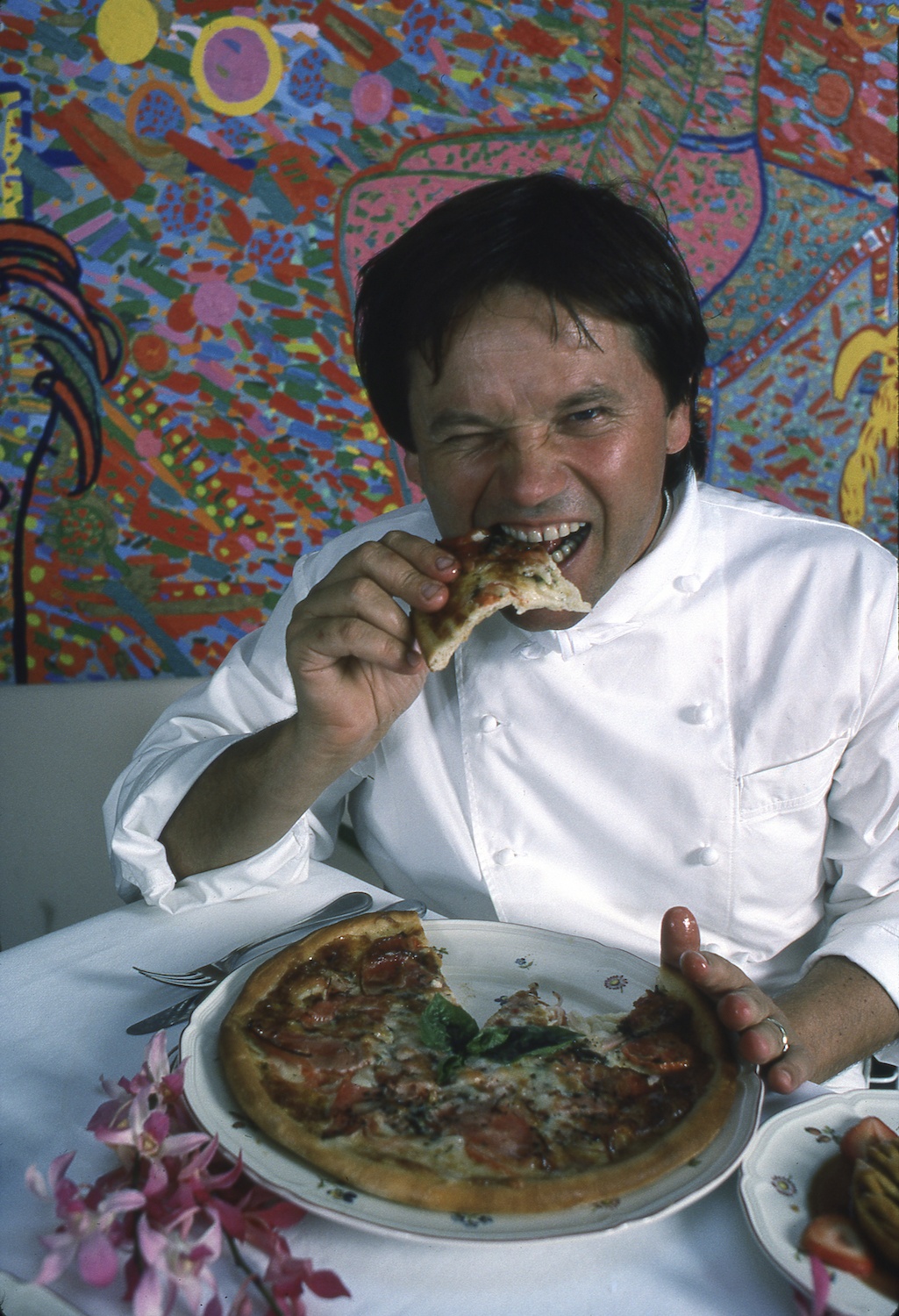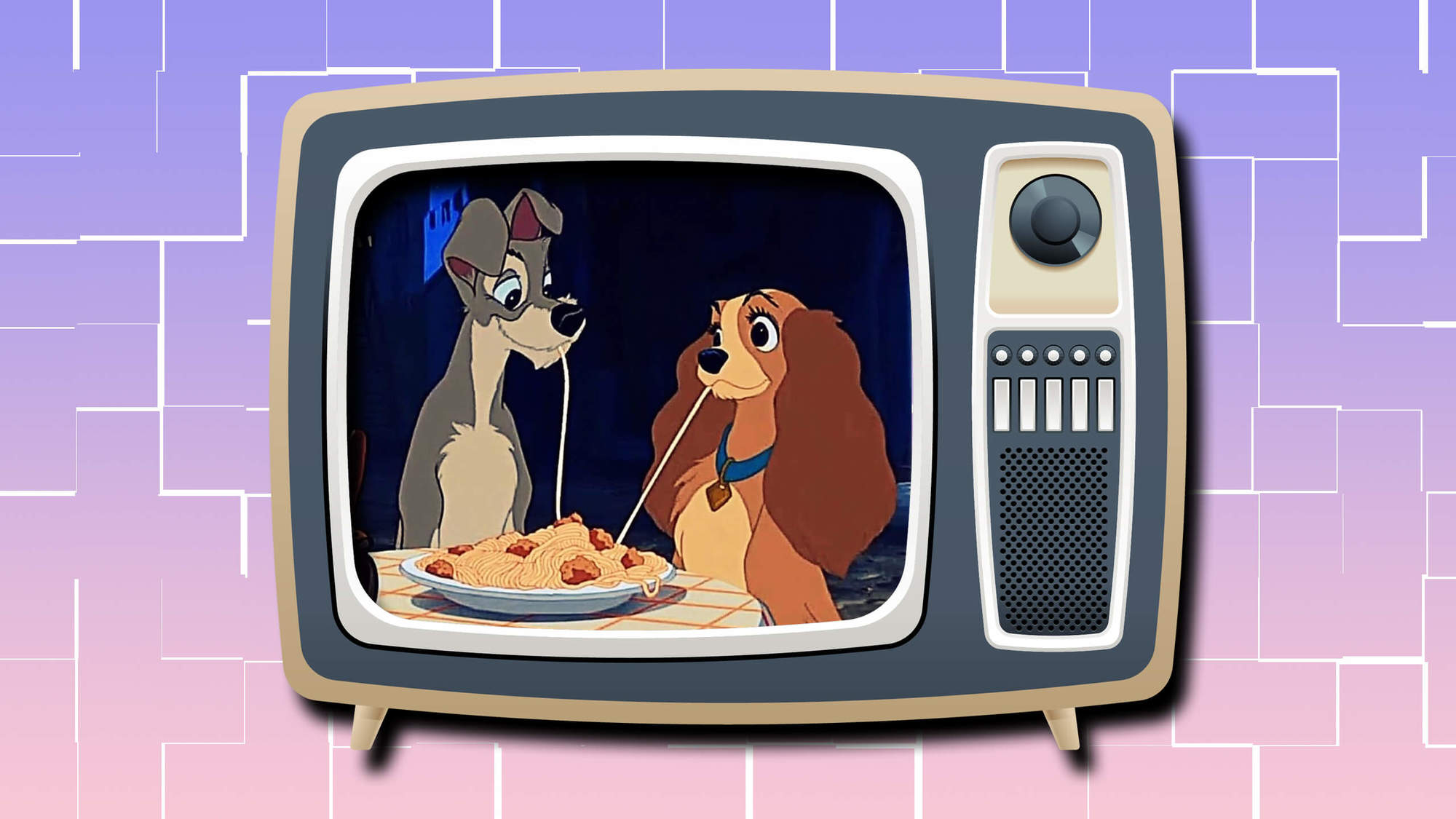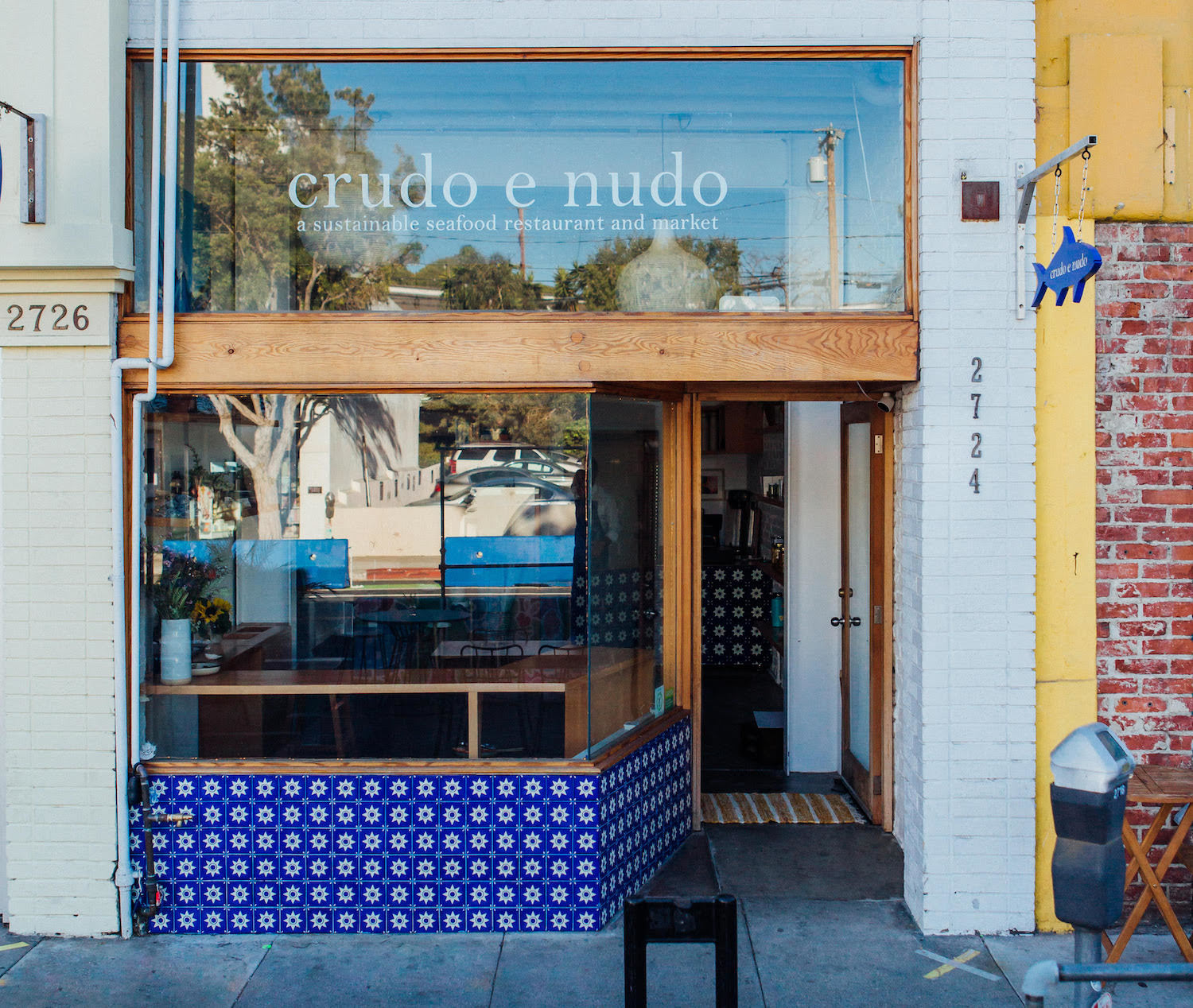
Ashley Randall
If all of us—from chefs to customers—subtract celebrity and refine the pre-fame restaurant, indies might have a better chance at survival.
When the chef Mark Peel died last week, his daughter, Vanessa Silverton-Peel, said, “My dad in so many ways was really ill-fit for the emergence of this whole rock star-chef era. He always thought of himself as a cook, he thought of himself as doing manual labor.”
Pictured above: In April, owners Leena Culhane and Chef Brian Bornemann opened Crudo e Nudo—a combination raw bar, fish market, morning coffee bar, and wine shop—which relies on new outdoor seating in Ocean Park, California.
“He wasn’t the guy who was always looking for attention,” said Silverton-Peel. “He was the guy who wanted to feed people really good food.”
Campanile, the restaurant he owned with his former wife, the chef Nancy Silverton, won the James Beard outstanding restaurant award in 2001, and helped to define California cuisine for 23 years. These days, that feels like forever. And while Peel popped up occasionally on a competition show, as both a judge and a contestant, he once confessed to me that he felt uncomfortable doing it.
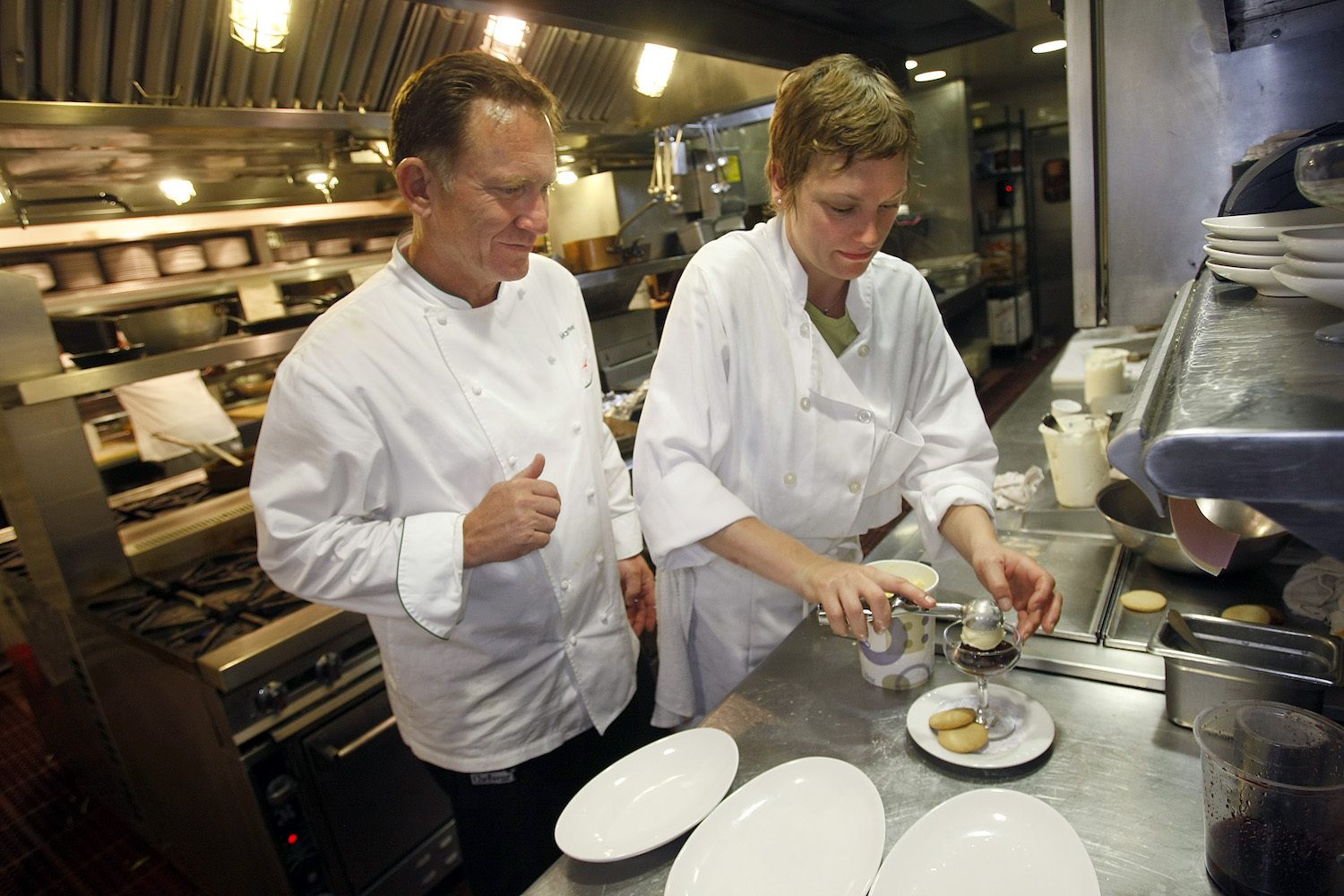
Mark Peel, the chef and co-owner of Los Angeles’ award-winning Campanile, who died on June 20, wasn’t cut out for the “whole rock star-chef era,” according to his daughter. That old-school attitude might be key to a new-era restaurant renaissance.
Cue Joni Mitchell singing “Don’t it always seem to go that you don’t know what you’ve got ‘til it’s gone,” which I’ve been humming for too many months, as I make a confession: I don’t romanticize restaurants but I do I love them, all out of proportion to reality. I am third-generation restaurant people, out of four, if you count ancillary occupations—my grandfather and father sold restaurant equipment, I write about them, and my daughter is a partner in one. For me, as a kid, restaurants were proof there was life outside the suburbs, experience outside the familiar, food outside the boxes of frozen vegetables; restaurants were interesting, flat out, and I can mark a timeline of important life moments based on where I was eating at the time, from birthdays to graduations to a wedding, to more mundane but no less valuable moments like a monthly lunch with a good friend.
So here’s a trick question. Tell me what this sounds like to you: An aspiring chef cobbles together enough money to rent a too-small space, hires a skeleton staff, pares the menu to a few impressive dishes that showcase his cooking skills but won’t break the budget, elevates cheap furniture and tableware to an aesthetic, sells signature items to take home, and offers take-out to compensate for not having enough tables. He serves beer and wine because he can’t afford a hard-liquor license, right off, but hopes to add a profitable full bar down the line. The place becomes a neighborhood hang-out, so over time he’s able to add lunch service—and if he’s really lucky, to expand into the space next door. Happy ending.
For me, as a kid, restaurants were proof there was life outside the suburbs, experience outside the familiar, food outside the boxes of frozen vegetables.
What did I just describe? The independent restaurant before celebrity fever hit, which it did, in waves, starting in the 1980s. That’s why I used the male pronoun: most of the chefs who opened their own places back then were men.
Or maybe, just maybe, I described something else: a model for the post-pandemic restaurant.
I am as far from being a Pollyanna as it is possible to be, short of being called a pessimist, and I know the heartbreak numbers: about 90,000 shuttered restaurants, 1.7 million hospitality workers out of a job, $290 billion in revenue lost. Even more places teeter on the brink, amid all the re-opening announcements, because the last round of aid dried up before people got the help they needed. One restaurateur I know pins her hopes on the rumor that “under review” means aid money has already been allocated for her restaurant, if her application is approved. Indies are still living on fumes.
But something has to happen next, and I like to think we can head back to the future, sadder, wiser—better—if everyone chips in. I do mean everyone, from chefs to employees to landlords to yes, us, the customers. If we do, we might just see a renaissance of the indie place that suffered so badly over the last year—a network of little phoenixes rising out of the still-smoldering ashes.
By the 1980s it wasn’t a joke, as chefs became businessmen (still, mostly, men) with publicists, supermarket product lines, and fast-casual spin-offs that traded on a chef’s name recognition.
I do not mean to sentimentalize the good old days, because they weren’t good, in so many ways—a hierarchy of white men trained in the European tradition, at the top, with everyone else in dead-end layers beneath them, a set-up that fanned abusive behaviors until they burst into flame with the 2017 headlines about Mario Batali. But if you dined out before the marquee names ascended, if you were a regular at a beloved local spot, you can summon up memories of how important, and how specific, an experience that was. You weren’t part of a pack of anonymous restaurant-chasers; you felt like you belonged.
Wolfgang Puck, who opened Spago in West Hollywood in 1982, was a first-wave celebrity chef. Almost 40 years later, his empire circles the globe, including fine dining restaurants, a catering operation, casual and fast-food chains, and other related products.
Sure, there was a national star or two, before chefs got famous, like Julia Child on public television’s The French Chef, in 1963, but she was an outlier, an American woman in love with French food and not a snob about it. Food media? Child and Jacques Pépin, recipes and grocery store coupons in the newspaper’s weekly food section, a couple of magazines.
But by the 1980s we were ready to meet our makers, and chefs like Wolfgang Puck became as well-known as their high-end food palaces. An award-winning chef once told me how disappointed his parents had been when he chose what they considered to be a blue-collar profession; he’d joked in response that a chef’s coat had a white collar. By the 1980s it wasn’t a joke, as chefs became businessmen (still, mostly, men) with publicists, supermarket product lines, and fast-casual spin-offs that traded on a chef’s name recognition.
The next step was probably inevitable. Even as one critic announced the end of the celebrity chef era, which defied news of its premature demise and lingered, the next phase—we’ll call it the anticipated-celebrity phase—started to take shape. Instead of acknowledging past achievement, we made people famous for their potential, as well as their willingness to embarrass themselves on television, and investors fueled the boom by throwing money at the cooks who prevailed. Social media recorded and inflamed it all: If you were a chef who didn’t have 50,000 followers on Instagram, did you, in fact, exist?
And then, as booms do, it went bust, sometimes more than once, as too many hot newcomers opened and closed restaurants at lightning speed.
By the time we got to 2019, restaurants were prisoners of their own momentum. It is one of the saddest ironies of my working life that we published a long look at the fragile American restaurant two weeks before the March 2020 shutdown.
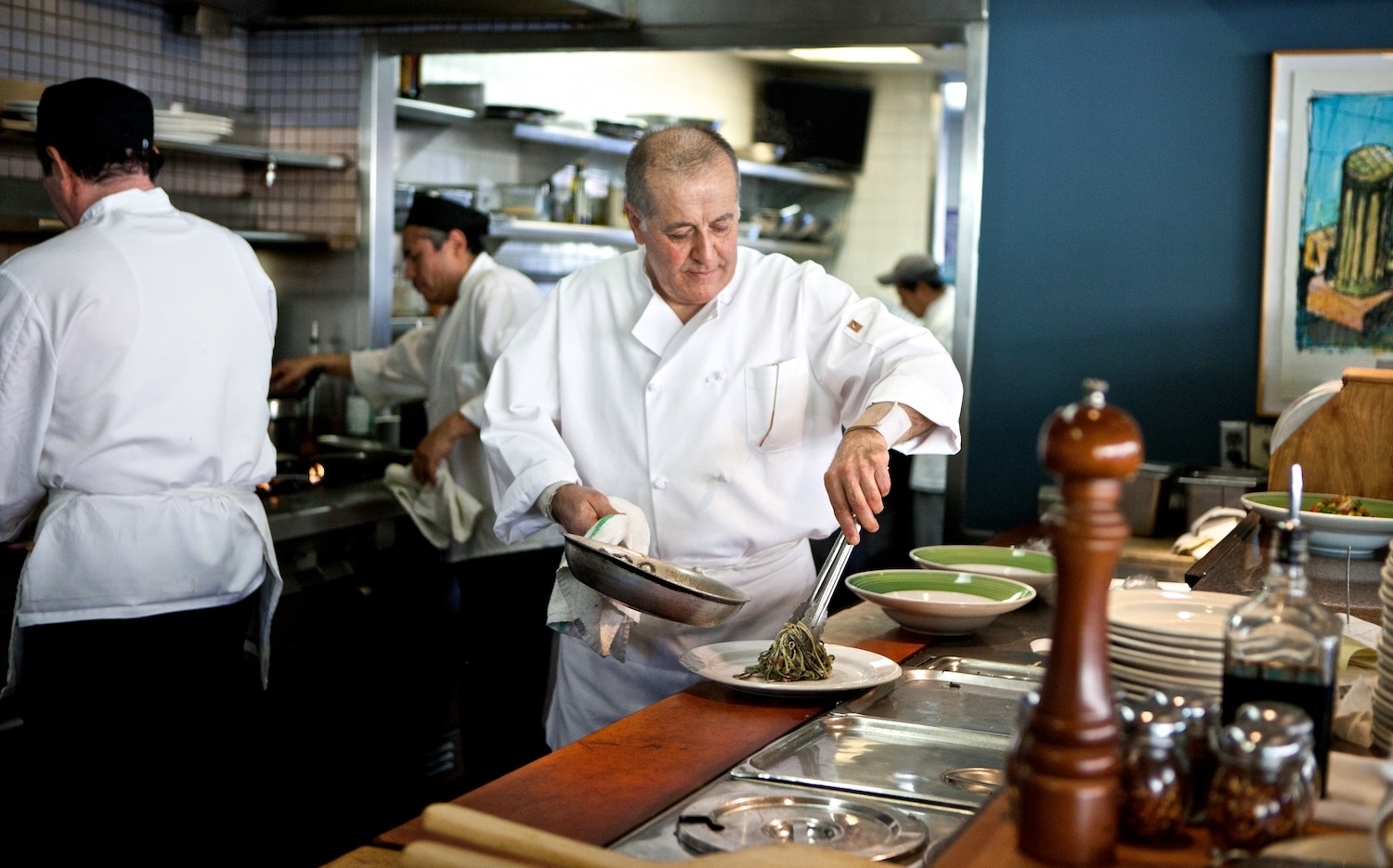
Chef Domenico Salvatore is one of the owners of Il Forno, an Italian restaurant that opened in a Santa Monica, California mini-mall in 1985. It’s not unusual to see three generations of regulars having dinner together.
Courtesy of Il Forno
The era of big-name branding is hardly going to evaporate, but there’s a somber undertone as people head back to work. Everyone’s feeling tentative, which could be a good thing if it translates into less hubris and more considered effort, to new notions of what constitutes enough, in terms of a career, and what a reasonable pace in pursuit of it might be.
There’s so much work to be done; looking for attention seems a dangerous distraction. Everybody on the business side can line up to do better. Owners can retool their business plans to take more advantage of the space they rent 24 hours a day, whether they’re open or not, which could mean creating a market space or subletting the kitchen during down shifts, or anything else they can think of to generate income. They can reconsider a work environment that’s a challenge even if everyone behaves well; one L.A. restaurant group floated the revolutionary idea that people might occasionally get a holiday off, unheard of even at the most enlightened of places because that’s when customers most want to dine out. They can revamp their wage and tip programs to enable all of their employees, front and back of house, to make a living wage, and can take a zero-tolerance approach to troublesome customers who think that good service includes attending to the demands of diners’ egos.
Instead of acknowledging past achievement, we made people famous for their potential, as well as their willingness to embarrass themselves on television, and investors fueled the boom by throwing money at the cooks who prevailed.
Landlords can take a cleansing breath as well; it might’ve been human nature to want a share of the spoils during the heyday of restaurant spending, but somehow their hunger never abated. When their tenants went out of business, some landlords left the storefronts empty, because settling for lower rent would diminish the property’s value—and while some of them were in thrall to banking institutions who called the shots, it’s time to make peace with reasonable rather than outsized profit, to give a restaurant a better chance of survival. Both sides used to resist the percentage lease, in which a landlord took a lower rent and a percentage of sales, landlords because of the risk the percentage would be too small, restaurant people because of the risk that it would be too big, and they’d end up paying more than a standard amount.
So set parameters and share the risk. Figure out a base and a cap to make everyone feel safe, to make a restaurant more appealing than empty square feet.
Which brings us to us, the paying customers, and our responsibilities—and too often, our sometimes egregious behavior. I’m talking to you, the writers of out-of-the-gate negative Yelp reviews, whether you launched your critic’s career at the March shutdown or waited for the current re-openings to wield your venomous pen. A simple question: Do you still imagine, with everything that’s happened, that your personal happiness is paramount in the universe, and that guaranteeing it should be a priority at pre-pandemic levels, as though nothing had happened?
The era of big-name branding is hardly going to evaporate—but there’s a somber undertone as people head back to work.
I guess you do. Los Angeles chef Jeremy Fox got hassled early on for what seemed to a reviewer like a paltry to-go serving of the signature matzo ball soup from his restaurant, Birdie G’s—which happened to be the exact volume of the restaurant serving, but in a take-out container that might’ve made it look like less. Even if it were less, one could argue that the third week of March, 2020, was probably not the best week to take anyone to task for anything short of ptomaine. Those same critics are back in force this summer, like cicadas, ready to slam any place that doesn’t compensate them for the last 15 months; they define a perfect meal as something better than whatever they got. See “entitlement, definition of.”
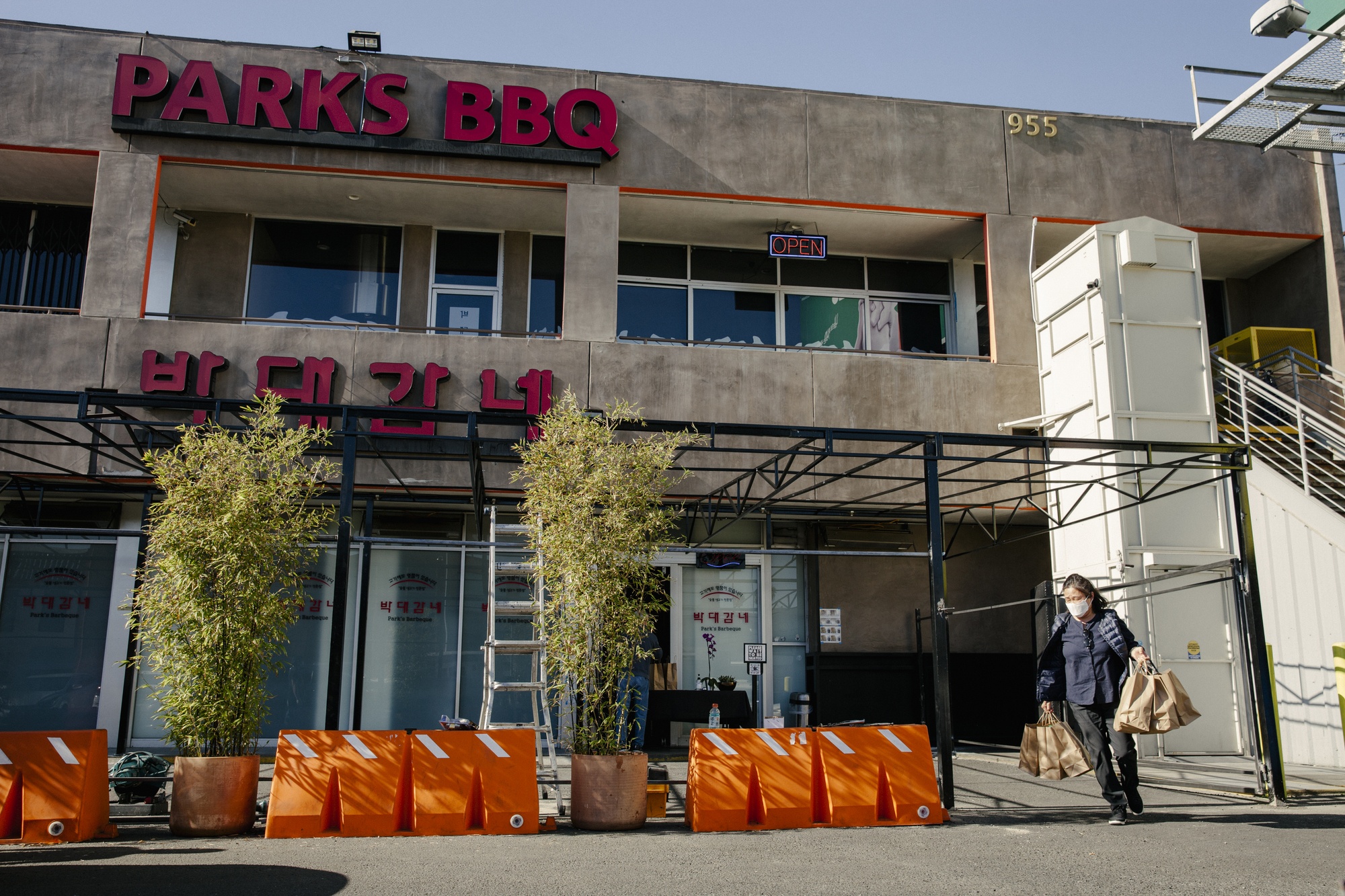
Park’s BBQ, a fixture in Los Angele’s Koreatown neighborhood since 2003, survived for over a year on a mix of take-out, delivery, and parking-lot seating—and on owner Jenee Kim’s determination to provide not only for her customers but for her staff.
Samanta Helou Hernandez
We can behave better. We can invest an extra $2 for a burger if a place has had to raise its prices to do a better job, and remember that we already pay more than we used to for gasoline, movie tickets, a haircut, and a pair of jeans. Use your antenna; you can tell if a place is trying to get by or trying to gouge you, and make appropriate dining choices based on that. If you’re of the demographic that is able to pay more for those other items, you can handle the burger—and indies need your help because they are still the most at risk. Fast-food places are already built for drive-through culture, and can adapt more easily, and truly high-end places are going to see a rush of people who want to party like it’s 2019. It’s up to us to keep the middle stripe from shrinking even further.
I don’t mean to get all mystical on you, or maybe I do, a little, but a restaurant is an oasis if we let it be, whether we’re that party of eight in the corner or a singleton at the bar. It’s not a pit stop to fuel up and move on. If we play our cards right—us, people in the business, the government that still needs to do more—we might have a shot at what we used to love about restaurants, minus some of the tangential hoopla. Wouldn’t be a bad way to start over.
